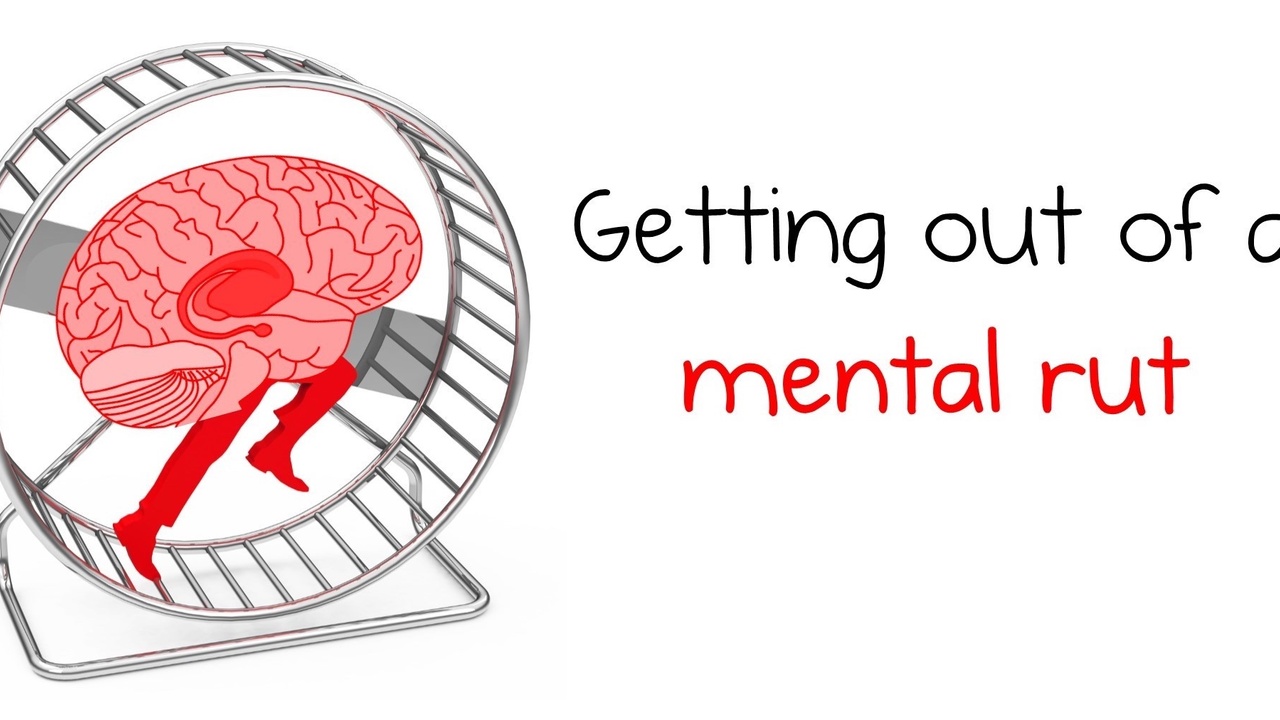Getting out of a Mental Rut
Oct 20, 2022
How to Step Away from Repetitious Negative Thoughts
We all have them. They can keep you up at night worrying about someone or some situation you’re currently facing. Our minds replays a difficult conversation again and again, and we imagine what we wish had said (versus what we did say). We mentally rehearse what we should do in an upcoming hard situation and imagine the results: good and bad. Or maybe our minds are spooled up by the boss asking to see us in her office on Monday morning.
The more we try and not think about the subject, the worse it is! The mental gymnastics gets us buried more deeply in worry – just like a struggle to get out of quicksand.
So, how to we move past these thoughts? Is there a mechanism or a process? There is!
Before we begin, give yourself a break! Stop beating yourself up for having these thoughts. They bubble up because we’re ultimately trying to protect ourselves. From what you ask? Well, at first it may seem from hurt, pain, grief, embarrassment, etc. But, we have also been conditioned to insulate ourselves from the depths of joy, peace and presence we’re capable of experiencing. Think about it. How would your family and friends react if you were happy most of the time? Would they be supportive of you or would they be asking you what pill you’ve been taking? I believe many of us tend to guard our happiness, because, in my experience, joy intimidates a lot of people.
So, first acknowledge the thought that you are stuck on. What if you told that inner voice “I know you’re just trying to protect me.” A little acknowledgment will go a long way to help disarm the thought. When recognized, the thought can no longer hide away, gnaw on you in the dark, and keep you in a perpetual defensive position. Instead, you now have the power to redefine the thought from wholly awful to something that contains purpose.
Then I suggest three steps.
THE BAD – The first step is to ask yourself, “What ‘bad thing’ are you trying to protect me from?” and “What’s the worst case scenario here?”. Let’s say you and your spouse had a fight before work this morning. Perhaps later in the morning, you text him, in an effort to turn toward your spouse and repair your relationship after the fight. (“Turning toward your partner” and “repair bids” are ideas found in Dr. John Gottman’s work.) Now, it’s been five hours since you sent your text and your spouse still hasn’t responded. You’re worried. You keep thinking about the text you sent (“should I have said something else?”) and the lack of a response from your spouse.
So, what’s the “bad thing” you’re worrying about? Maybe you’re concerned that some sort of irrevocable damage was done to the relationship. Or maybe you’re worried that your spouse is still going to be mad when the next door neighbors come over for dinner tonight. Now that you’ve defined the “bad thing”, what’s the worst case scenario for the situation? Maybe your spouse wants to cancel the dinner plans. Okay. Could a late notice cancellation be a bit uncomfortable or embarrassing? Possibly. Would you live? Yep. Could a blistering argument irrevocably damage a trouble marriage? Possibly. Would you live? Yep. Okay, so you’ve mapped out the worst case scenarios.
THE GOOD – The second step is to focus on what “good things” these thoughts are keeping from you. Like what, you may ask? What about peace in this moment. Joy during this time. Your child’s laughter in in the other room. The beauty of the flowers you’re planting in your flower boxes. The exquisite happiness of a morning cup of coffee! (I love my coffee!) The satisfaction of completing a big project at work. Or perhaps remembering all of the things you adore about your spouse and how good your relationship is most of the time?
THE JOY – Once we see what we’re missing, the third step is that we distract ourselves with the presence of our joy! Focus on the good stuff that is happening right this very minute as a means to distract us from additional negative thoughts on the other subject. For example, you just heard your son laugh – and you’re smiling. You find yourself thinking about doing a fun project with him now or taking him to the park to play so you can experience more of his joy. Perhaps you just completed a huge project at work, and now it’s time to recognize this important achievement. How are you going to celebrate? Maybe you’re planting flowers in your flowerboxes. Enjoy the beauty of their colors and focus on the task at hand. How do you want to arrange them? Or maybe you’re having a cup of coffee right now. Feel the warmth of the cup. Take time to enjoy the aroma and taste, instead of just chugging it down while you’re doing something else.
My belief is that we are responsible for creating the experiences of our lives. Perhaps you’ve heard it said that “happiness is an inside job.” That’s the same idea. Getting stuck frequently in repetitious negative thinking does not promote happiness. Rather, it sabotages our joy. So try something different this time – do the steps outlined above. In doing so, you may find you’ve turned your day, or life, to a new and joy-filled direction.
Suzanne E. Grandchamp
UNTANGLE, UNPACK, & LIVE WISELY
What has got you worried or distracted lately? Acknowledge the thought. What’s “bad thing” it is trying to protect you from. What’s the worst case scenario? What “good thing” could it also be protecting you from? What joyful things are going on right this very minute? What can you appreciate and focus on in this moment?

